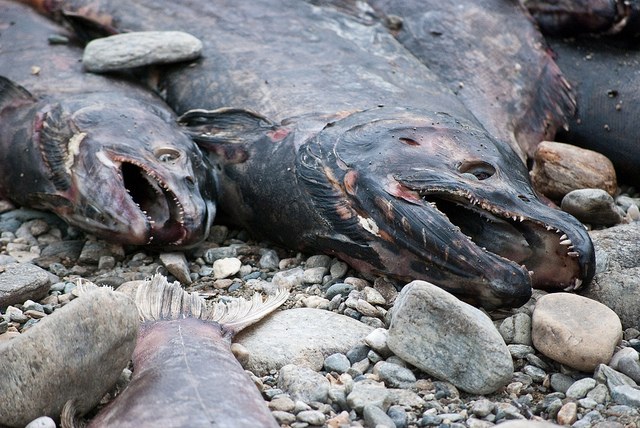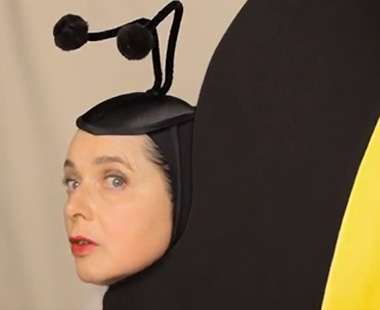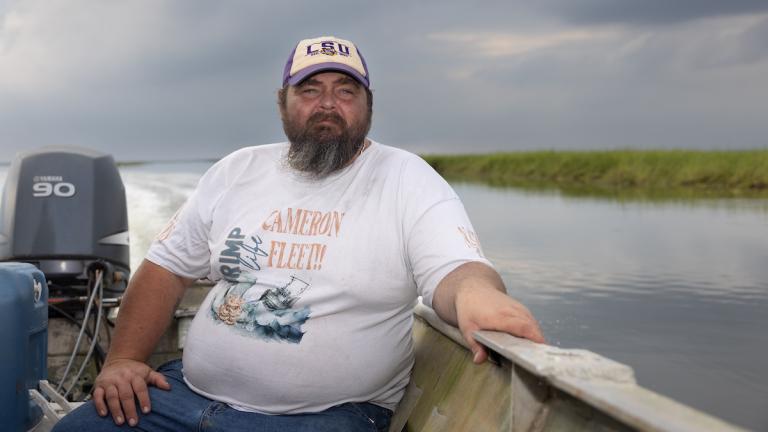
Photo by Chris Johnson.
What are fish thinking when they change genders?
When Burt’s Bees invited me to this press event, they probably didn’t expect Isabella Rossellini to be the one asking questions, much less that one. Or for her to go on and note that gender assignation is largely a human construct. And to then express curiosity about what the process is like from the fish’s perspective.
Sitting next to Rossellini, holding my notebook, I’m not really sure how to answer. After a pause, undeterred, she explains that fish are less interesting to play than insects because “sometimes they spawn, but that is it.”
Luckily for her, we were there to talk about insects — namely, bees — and sitting with people who could answer the trickier questions she raised: for example, how scientists test for neonicotinoids, a pesticide that may impact bee navigation. (“Do they take the hives? … Do they feed them?” The answers were unknown.)
Rossellini has created an unusual niche for herself. Her series for the Sundance Channel, Green Porno, introduced Americans to the exotic, alarming mating rituals of flies, snails, and praying mantises — with herself starring as each of the creatures. She enjoys the roles primarily because of the eccentricities of behavior, because of the tiny nuanced details that she likes to try and get right. And, clearly, because it is a topic about which she’s deeply curious and fascinated to learn.
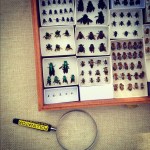 Now, working with with Burt’s and the Pollinator Partnership, she’s bringing her skills to the world of bees. Today marks the beginning of Pollinator Week, the sixth iteration of an annual effort by Pollinator Partnership to celebrate “the valuable ecosystem services provided by bees, birds, butterflies, bats and beetles.” To mark the occasion — and to do a little marketing — Burt’s Bees held an informal premiere for Rossellini’s three new videos last week on a rooftop in Manhattan. Also in attendance, bees: live ones, both in a hive brought by NYC Beekeeping and a few random strays; and, ominously, dead ones, presented by the American Museum of Natural History.
Now, working with with Burt’s and the Pollinator Partnership, she’s bringing her skills to the world of bees. Today marks the beginning of Pollinator Week, the sixth iteration of an annual effort by Pollinator Partnership to celebrate “the valuable ecosystem services provided by bees, birds, butterflies, bats and beetles.” To mark the occasion — and to do a little marketing — Burt’s Bees held an informal premiere for Rossellini’s three new videos last week on a rooftop in Manhattan. Also in attendance, bees: live ones, both in a hive brought by NYC Beekeeping and a few random strays; and, ominously, dead ones, presented by the American Museum of Natural History.
The plight of the bee is well established and has impact beyond the insects themselves. Seventy percent of flowering plants need bees and other pollinators to reproduce — meaning that a great variety of food crops are at risk when bee populations are depleted. Colony collapse disorder, a still-mysterious affliction that has resulted in mass abandonment of beehives, is only one factor in the depletion of hives. As Christina Grozinger, associate professor at Penn State University and director of the Center for Pollinator Research, explained, the threat to bees “is like cancer. There are multiple causes.” The goal of the Pollinator Partnership (and, for fairly obvious reasons, Burt’s) is to raise awareness around the steps that individuals can take to build an environment friendly to bee activity, even if there isn’t necessarily a concrete step that will save them.
In the three videos (one of which is above), Rossellini plays both Burt Shavitz, the eponymous founder of the company, and bees: a queen, a drone, and a worker. (If you can’t tell, the older gentleman at the beginning is the real Burt. The person wearing a beard made of newspapers is Rossellini.) Blending the same goofy costuming used in the Green Porno series with elegant cut-paper animations, the videos are short and clever.
And very depressing. The life of a bee is far nastier, much more brutish, and years shorter than any human’s. What could be more hopeless than describing the life cycle of a critical member of the ecosystem and then ending with a shrugging “wish we knew what killed them”?
It’s unavoidable, of course. We don’t know. For Americans used to videos that wrap up complex issues in ribbons of useless action (see: Kony 2012), these videos will not scratch the itch. Plant wildflowers; buy local honey; patronize organic farms. These steps are important — but admittedly might not make a difference. They’re the best we can do.
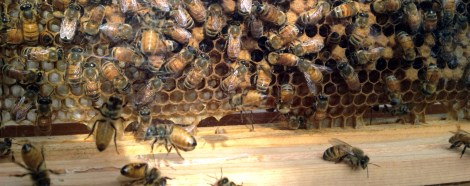
After the videos were shown, the small audience asked questions. How do queens attract drones to mate? Where is colony collapse occurring? And a very popular question, spurred by a comment from Grozinger: “What makes a queen bee ‘crappy’?”
This last prompted Rossellini to jump in, adding to the response given by a woman who has her doctorate in such matters. When we hear the word queen, she pointed out, “we imagine someone who rules and gives commands.” (This is partly the result of Shakespeare, Rossellini noted, who assumed that the most important member of the hive would be masculine, its king.) When Grozinger explained that queens could be replaced, Rossellini jumped in again, describing the royal jelly fed to young female larvae to create a new queen.
These are the sorts of things you have to know if you want to portray a bee in a movie.
